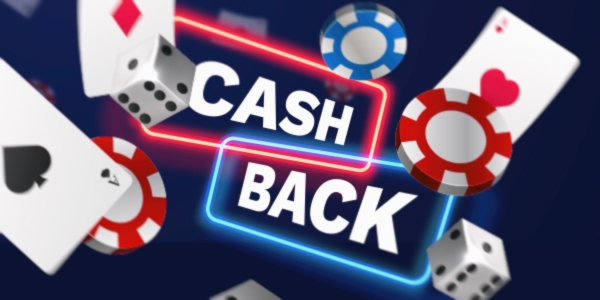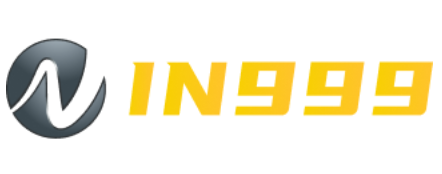Comparing Cashback to Other Bonus Options in 999 – Copy
In the competitive world of online shopping and entertainment, consumers have a plethora of options when choosing how to maximize their spending. One popular method for earning rewards is cashback programs, which return a portion of the money spent back to the consumer as a bonus. However, there are several other bonus options available that can also enhance the shopping experience. This article aims to explore the various aspects of cashback compared to other incentive programs offered in 999. By understanding these differences, consumers can make more informed decisions on which option suits their needs best.
Understanding Cashback Programs

Cashback programs have surged in popularity due to their straightforward nature and tangible rewards. Let’s delve deeper into what cashback entails and how it functions in the realm of bonuses.
What is Cashback?
Cashback is essentially a reward system where a percentage of the amount spent on purchases is returned to the buyer. For instance, if a consumer makes a purchase of $100 with a cashback offer of 5%, they would receive $5 back. This simple yet effective strategy has caught the attention of many shoppers looking to save money while spending.
How Cashback Works
When participating in a cashback program, users typically sign up through a specific platform or retailer. Once enrolled, consumers can earn cashback on purchases made through designated channels. The cashback may be credited instantly or accumulated to be paid out later, depending on the terms of the program. Some cashback offers may even apply to recurring purchases such as subscriptions, providing ongoing savings opportunities.
Benefits of Cashback Programs
One of the primary advantages of cashback programs is their versatility. Unlike some loyalty programs that restrict rewards to specific categories or products, cashback can generally be earned on virtually any purchase. Additionally, cashback rewards are often uncomplicated to redeem, with many programs allowing users to transfer funds directly to their bank accounts or use them for future purchases.
See more: in999
Exploring Other Bonus Options

While cashback programs are undeniably appealing, they are not the only game in town. Let’s explore some alternative bonus options available in 999 that might catch the interest of savvy consumers.
Loyalty Points Programs
Loyalty points programs are designed to incentivize repeat business by rewarding consumers with points based on their spending habits. These points can often be redeemed for products, services, or discounts.
How Loyalty Points Accumulate
Similar to cashback, loyalty points accrue based on the amount spent. However, instead of immediate cash returns, points build over time. Each retailer typically sets its own conversion rate, which determines how many points are earned per dollar spent. Many brands also offer bonus points for promotions, special events, or new product launches, helping customers accumulate points faster.
Redemption Options
The flexibility of redemption varies widely among loyalty programs. Some companies allow points to be exchanged for exclusive products, experiences, or discounts on future purchases. Others may tie points to tiers, enabling higher levels of rewards for loyal customers. Ultimately, the value of loyalty points depends on the conversion rate and the excitement of potential rewards.
The Drawbacks of Loyalty Points
Despite their benefits, loyalty points programs can come with drawbacks. The accumulation process can feel slow to consumers who do not shop frequently or at high amounts. Additionally, points often expire after a certain period, meaning consumers must stay engaged to reap the benefits. This expiration can lead to frustration among users who feel their efforts to accumulate points go to waste.
Referral Bonuses
Another engaging bonus option is referral bonuses, which reward current customers for bringing new users into the fold. This mutually beneficial relationship encourages brand growth while rewarding existing customers.
How Referral Bonuses Work
Referral programs typically involve sharing a unique link or code with friends or family members. When someone uses this code to make a purchase, both the referrer and the new customer may receive a reward, such as a discount or a monetary bonus. The beauty of referral bonuses lies in their ability to create a community of brand advocates.
Potential Benefits
Referral bonuses can significantly benefit consumers looking to save on future purchases. Not only do they often provide immediate rewards, but they also foster a sense of connection between consumers and the brand. Moreover, they work seamlessly alongside other programs, enhancing overall user engagement and satisfaction.
Challenges Associated with Referral Programs
However, referral programs can be challenging for businesses to manage. They often require an extensive tracking system to ensure accurate rewards distribution. Additionally, they may lead to inflated numbers without converting new users into long-term customers. Thus, while beneficial, referral programs need careful consideration and management.
Promotional Offers and Discounts
Promotional offers and discounts are perhaps the most traditional form of incentives used to drive sales. Whether it’s seasonal sales, clearance items, or limited-time offers, these strategies continue to attract customers.
Types of Promotions
Promotions can take many forms, including percentage-off deals, buy-one-get-one-free offers, or free shipping incentives. Seasonal sales during holidays can also spark considerable interest, encouraging consumers to spend more in anticipation of substantial savings.
Advantages of Promotions
Promotional offers can lead to immediate gratification for consumers, providing instant savings at the point of sale. They can also encourage impulse buying, as shoppers may be more likely to purchase items they wouldn’t have considered otherwise due to the perceived value of the deal.
Limitations of Promotional Strategies
On the downside, promotional strategies can create a short-lived sense of urgency, leading consumers to hurry their decisions. Over-reliance on promotions can also erode brand value, as customers may begin to expect constant discounts rather than shopping based on genuine interest in a product.
Comparing the Effectiveness of Cashback and Other Bonuses
At this stage, it is important to evaluate the effectiveness of cashback programs against other types of incentives available in 999.
Cost-Effectiveness
When comparing cashback to loyalty points, referral bonuses, and promotional offers, cashback often stands out for its straightforward approach to savings. While loyalty points may offer exciting rewards, their accumulation can slow down for less frequent shoppers. In contrast, cashback encourages regular spending while delivering tangible returns.
User Engagement
The comparative user engagement levels vary across different bonus options. While cashback programs drive consistent participation, they may not cultivate the same emotional attachment found within loyalty points or referral bonuses. Consumers may view cashback merely as a transactional benefit rather than developing a relationship with the brand.
Redemption and Accessibility
From a redemption perspective, cashback programs typically outperform alternatives like loyalty points or referral bonuses, which can complicate the process. Cashback is often straightforward— users receive funds directly or redeem them easily. In contrast, loyalty programs may impose restrictions on how and when points can be redeemed, potentially causing disappointment for users.
Long-Term Value
In terms of long-term value, cashback programs maintain an edge over promotional offers, which tend to be temporary. While consumers may enjoy instant savings from promotions, cashback strategies reinforce spending habits and repeat visits, fostering brand loyalty over time.
The Emotional Aspect of Rewards
Finally, it’s essential to consider the emotional aspect of rewards. Cashback may excel in financial returns, but loyalty points and referral bonuses can evoke a sense of achievement or belonging. Shoppers who engage with these programs may be more inclined to remain loyal to the brand over time.
FAQs
What is the primary difference between cashback and loyalty points?
Cashback rewards return a percentage of money spent directly to the consumer, while loyalty points accumulate based on spending and can be redeemed for products or discounts after reaching a certain threshold.
Are cashback programs better than promotional offers?
Cashback programs often provide more sustainable savings opportunities since they reward continuous spending, whereas promotional offers are typically limited-time deals that may encourage impulsive purchasing.
How can I maximize my earnings with cashback programs?
To maximize your earnings with cashback programs, regularly check for promotional offers, utilize multiple cashback platforms, and shop strategically at retailers that offer higher cashback rates.
Do referral bonuses typically last longer than cashback programs?
While referral bonuses usually offer instantaneous rewards for both parties involved, cashback programs can provide ongoing savings for continued patronage, making both options valuable in different ways.
Can I combine cashback with other bonus programs?
Yes, in most cases, you can combine cashback with loyalty points and referral bonuses, allowing you to maximize savings and rewards across different platforms and retailers.
Conclusion
As consumers navigate the vast landscape of bonus options in 999, understanding the nuances between cashback and other reward systems becomes crucial for maximizing savings. While cashback offers straightforward financial returns, loyalty points, referral bonuses, and promotional offers each present their own unique advantages and challenges. Ultimately, choosing the right program depends on individual shopping habits, preferences, and desired outcomes. By weighing the pros and cons of each option, consumers can confidently select the bonus structure that best aligns with their lifestyle, ensuring they get the most out of their spending.
